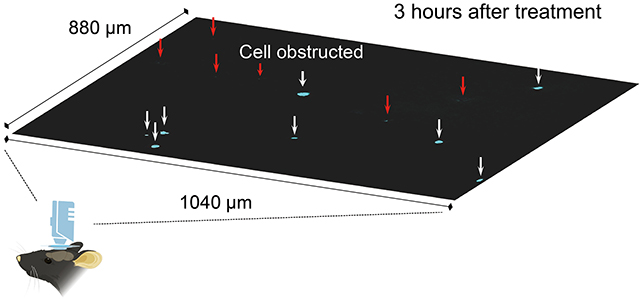Microplastics now permeate our food and our body, researchers wish to assess the potential damage that these tiny fragments could make. A new study shows how plastics can lead to dangerous blood flow blockages in the brain.
The study, led by a team from Chinese Research Academy of Environmental Sciences in Beijing, involved the monitoring of microplastics in the blood vessels moving through the brain of the mouse in real time – the first time that the microplastic movement has been followed in this way.
Using high -resolution laser -based imaging techniques, researchers have found immune cells loaded with microplasts to be housed inside the blood vessels in the brain cortex area.

“Our data reveal a mechanism by which microplastics indirectly disrupt the tissues by regulating the obstruction of cells and interference with local blood circulation, rather than direct penetration of tissues”, write researchers in their published article .
“This revelation offers a lens through which to understand the toxicological implications of microplastics which invade blood circulation.”
The researchers have found certain similarities between blockages here and blood clots, while examining the subsequent impact on mouse behavior. Mouses with microplastics in their blood operated less well than their plastic peers on movement, memory and coordination tests, pointing towards the altered brain function.
Microplastics are defined as plastic fragments of less than 5 millimeters (0.2 inches) in diameter. As you can expect, small plastic stains have been less likely to cause blockages than the largest.
Although microplastic blockages have been lightened in a month and most cognitive behaviors in mice have returned to normal, researchers suggest that there could be links here to neurological problems such as depression and depression and depression and depression and depression and depression and depression and depression and depression and depression and anxiety, as well as an increased risk of lines and cardiovascular disease.
“These results indicate that mice have multiple facets in neurobehavioral regulation, resembling depressive states associated with disturbed cerebral blood flow, write researchers.
Although it is not certain that the same processes occur in the human brain – there are significant differences in terms of immune systems and blood vessels – mice are sufficiently biologically similar to us as a species for make it real concern.
There is much more to explore in terms of mechanisms behind these blockages, long -term effects and animals that could be affected. Researchers also highlight other studies that have started to analyze the potential links between microplastics and the risk of illness, although no direct relationship in humans has yet been found.
“The use of larger mammals or animal models that look more closely at the human circulatory system, such as non -human primates, is therefore crucial to study this process,” write researchers.
“The long -term potential effects of microplastics on neurological disorders such as cardiovascular depression and health are worrying.”
Research was published in Scientific advances.


